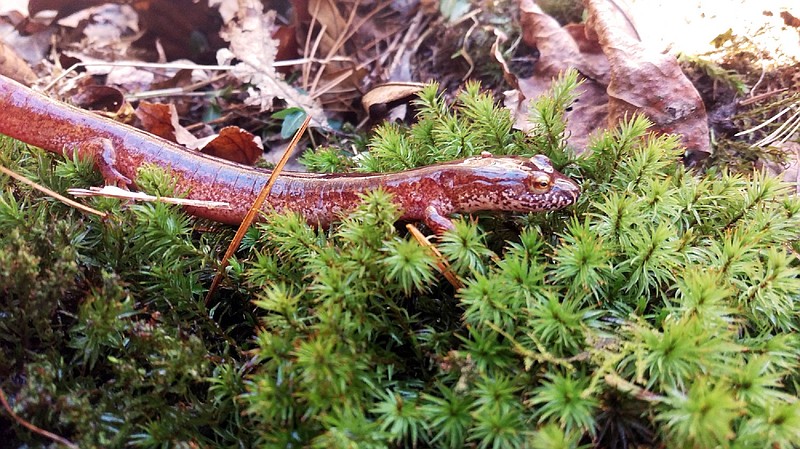In addition to dangerous weather patterns and rising sea levels, researchers have discovered another consequence of climate change - chubby salamanders.
A recent study conducted by researchers from Sewanee, Southeast Missouri State University and the Tennessee Aquarium suggests that certain salamander species respond to elevated water temperatures by putting on weight, according to a news release.
"Normally, salamanders live in size-structured communities, meaning larger species tend to out-compete smaller species for prime position in the cooler, deeper waters in the middle of the stream," the release read.
However, studies suggest the smaller species will adapt more readily to warmer conditions brought on by climate change.
Scientists tested this by measuring how warming the water in an artificial stream impacted populations of spotted dusky salamanders and the smaller Cumberland dusky salamander, which is under review for listing as endangered by the U.S. Fish and Wildlife Service.
"What we found was that the smaller species actually didn't grow longer, but they did increase their body weight," said Dr. Josh Ennen, an aquatic conservation biologist at the Tennessee Aquarium Conservation Institute and one of the contributors to the study.
"Over a small amount of time, these salamanders shifted energy away from growth toward putting on weight," Ennen added.
"If you're stressed out, a lot of times, you put on more weight. In the wild, that's a response where you pack on calories because you may need to burn those calories in the future."
The result was unexpected by Ennen and the study's other contributors, but more study will be necessary to better understand the implications of climate change on salamanders.
About 80 percent of North America's salamander species live within 500 miles of Chattanooga.
"You think about how many of them are found in our streams, and they become hugely important to the food web," Ennen said. "Collectively, the whole research program that we're trying to build looks at how climate change affects headwater stream communities, which is an important conservation issue."

